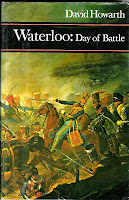 This past weekend we attended the Eurocar 2007 show at the Lorenzo State Historic Site in Cazenovia, NY, arriving in our vintage Mini of course.
This past weekend we attended the Eurocar 2007 show at the Lorenzo State Historic Site in Cazenovia, NY, arriving in our vintage Mini of course.
Built in 1807 by John Linklaen (of Dutch origin), house is furnished with items from the Regency through the Victorian eras. There’s a virtual house tour on the website. A treat is the carriage house with a mini museum including a collection of antique carriages and sleighs, a few close to “our” time period. It’s definitely worth a visit if you are in the area.
I toured the house with my children last year but this year we had the pleasure of participating in a “Victorian Fashion Show” in which the presenter dressed my oldest daughter as if she were going for a drive. Some of the things she said made me wonder but I’m by no means an expert on period clothing, especially Victorian. I’m curious to learn what some of our clothing experts think.
Here’s my daughter after donning drawers, chemise (tucked in–is that right?) and corset. The corset itself I know to be inaccurate, because it happens to be the same modern one I wear under my Regency gown. It weirded me out a bit to see it on my daughter! She laced it in front, too, which isn’t how this corset is designed to be worn and I thought most corsets still laced in the back during the Victorian era. I think maybe it was just easier to do it that way. The point was made that corseting was used to achieve a particular look. As it was 85 degrees out and humid, I’m grateful she did not tighten it too much!
The next layers included petticoat, hoops, another petticoat and bustle pad. The presenter said they might wear as many as 10 petticoats and that the full weight of the clothing might be something around 40 lb, which seems staggering to me. If true, this seems quite brutal, especially in summer.
The other thing she said, as she completed my daughter’s toilette with dress, shawl, bonnet and parasol, was that women were not supposed to show any skin other than the face and hands. Hence the long sleeves and high neck of the gown. By this point I was worrying I’d have to sprinkle water on my kid to revive her, but she did look cute!
Comparing to the Regency (check out
Kalen’s dressing the Regency heroine page) the initial layers of clothing aren’t very different. But without the profusion of petticoats, the hoops, etc…, the Regency lady’s clothing load would be far lighter. And at least she was allowed to show some neck and arm, allowing some body heat to escape if necessary!
As I said, I’m not sure everything in this presentation was precisely correct but it does generally match what I’ve read about the Victorian era. I like to be very active but I’m also a bit prone to heat exhaustion, so I’d have a lot of trouble putting a heroine into this sort of clothing. If I ever wrote a Victorian heroine, she’d have to be a rebellious, Bohemian type and flout at least some of these clothing conventions!
How about you? Can you get over these sorts of things when reading/writing Victorian set romance? Any interesting sites you recommend visiting that are closer to home for most of us than England?
Elena
www.elenagreene.com













